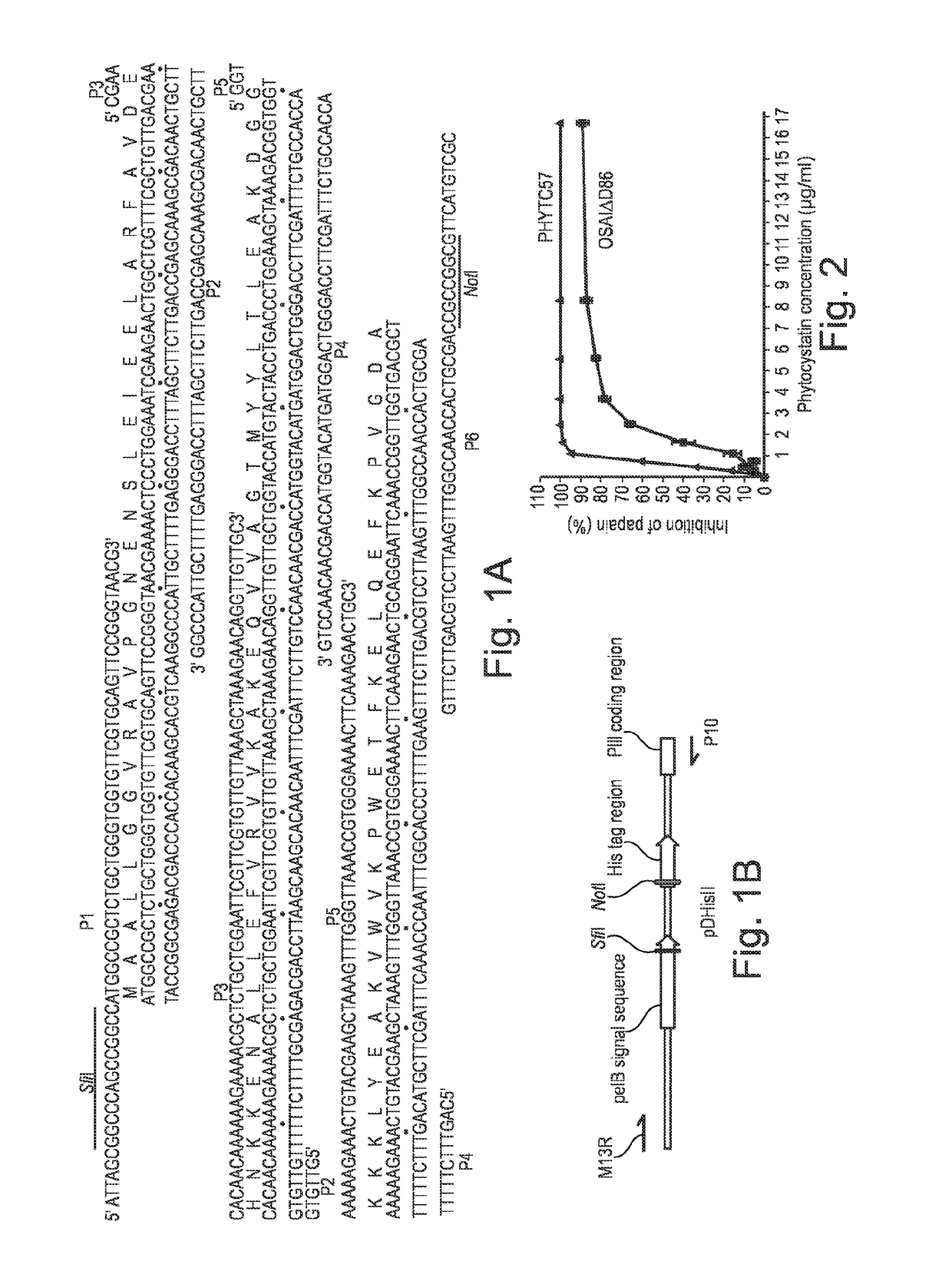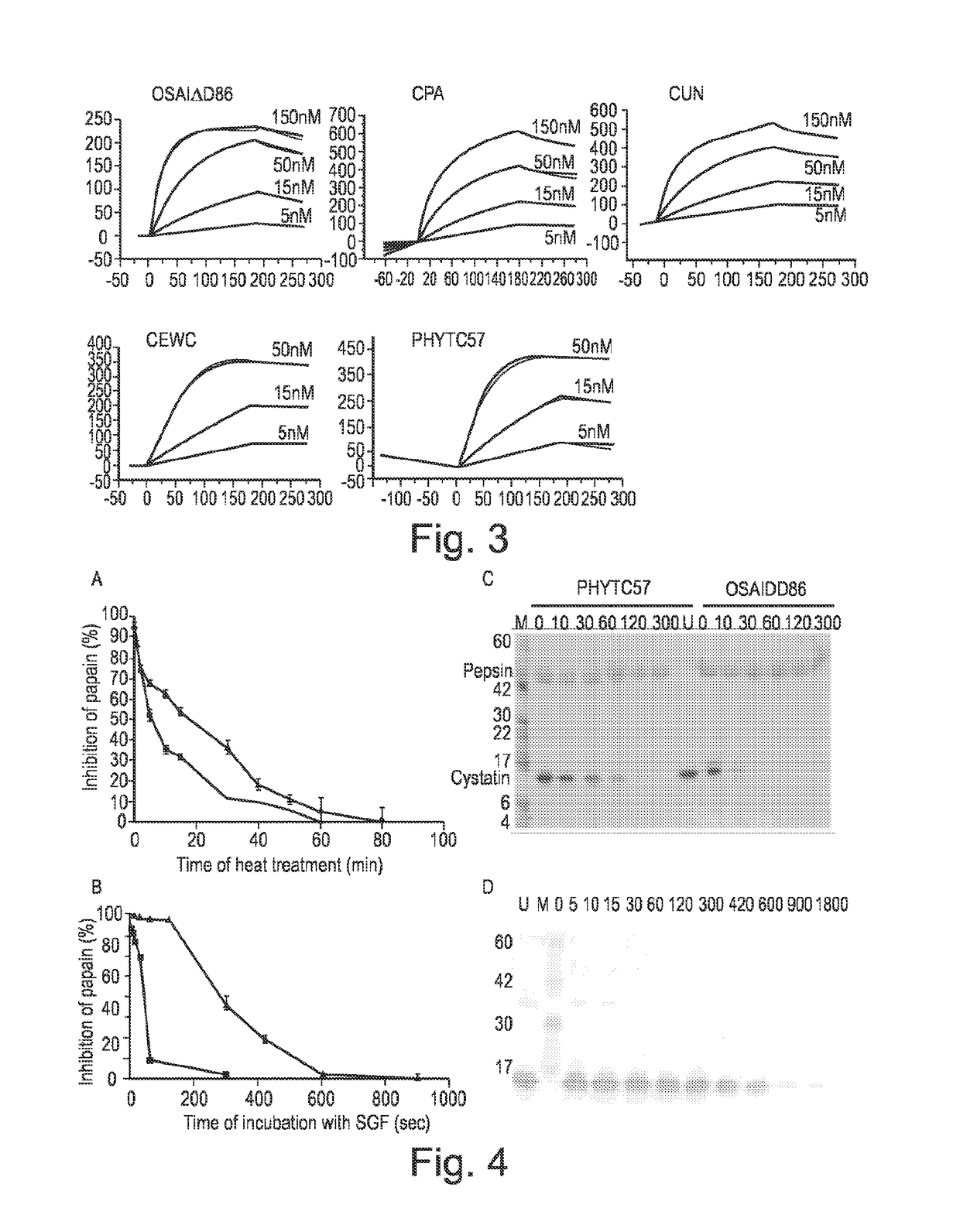Scaffold proteins derived from plant cystatins
a technology of plant cystatins and scaffold proteins, which is applied in the field of plant cystatins scaffold proteins, can solve the problems of insufficient stabilisation of prior art scaffolds and significant deformation of scaffolds, and achieve the effects of reducing tm, high stability, and enhancing stability
- Summary
- Abstract
- Description
- Claims
- Application Information
AI Technical Summary
Benefits of technology
Problems solved by technology
Method used
Image
Examples
example 1
that Inhibit Binding to SUMO
[0349]There have been no antibodies raised that are able to specifically and differentially bind to human SUMO 2 (hSUMO2). Adhirons were raised against hSUMO2 and multiple Adhirons that specifically bind to SUMO2 rather than human SUMO1 were identified. FIG. 13 demonstrates that the hSUMO2 Adhirons have a functional effect on a protein-protein interaction by binding to hSUMO2 and preventing RNF4, a polySUMO specific E3 ubiquitin ligase from binding with hSUMO2. The hSUMO2 Adhiron has this effect without affecting ubiquitination of other proteins. In the presence of ATP hSUMO2 normally binds to RNF4 causing ubiquitination of the target proteins (black smear at the top of the gel in lane 2). In the presence of increasing concentrations of the Adhirons (lanes 3 to 9) the level of ubiquitination decreases.
example 2
that Alter Fibrin Clot and Lysis
[0350]Fibrinogen was screened to identify Adhirons that could alter clot formation and lysis. Numerous Adhirons have been identified that alter this process in plasma samples. The graph shown in FIG. 14 represents the clot formation and lysis turbidity assay. The black line represents the normal time course of clot formation and lysis. The grey lines represent the effects of five different Adhirons on this process. Control non-fibrinogen binding Adhirons have no effect on this assay. The effects of the Adhirons include, reduced clot formation, increased lysis time, and increased clotting time. This demonstrates an ability of the Adhirons to modulate protein function by inhibiting protein-protein interactions. FIG. 15 shows a confocal image of FITC fluorescently labelled fibrinogen after clot formation in the presence of a fibrinogen binding Adhiron and a control Adhiron.
[0351]Expression of Adhirons in Mammalian Cells:
[0352]Adhirons were raised against...
PUM
| Property | Measurement | Unit |
|---|---|---|
| Tm | aaaaa | aaaaa |
| Tm | aaaaa | aaaaa |
| Tm | aaaaa | aaaaa |
Abstract
Description
Claims
Application Information
 Login to View More
Login to View More - R&D
- Intellectual Property
- Life Sciences
- Materials
- Tech Scout
- Unparalleled Data Quality
- Higher Quality Content
- 60% Fewer Hallucinations
Browse by: Latest US Patents, China's latest patents, Technical Efficacy Thesaurus, Application Domain, Technology Topic, Popular Technical Reports.
© 2025 PatSnap. All rights reserved.Legal|Privacy policy|Modern Slavery Act Transparency Statement|Sitemap|About US| Contact US: help@patsnap.com



